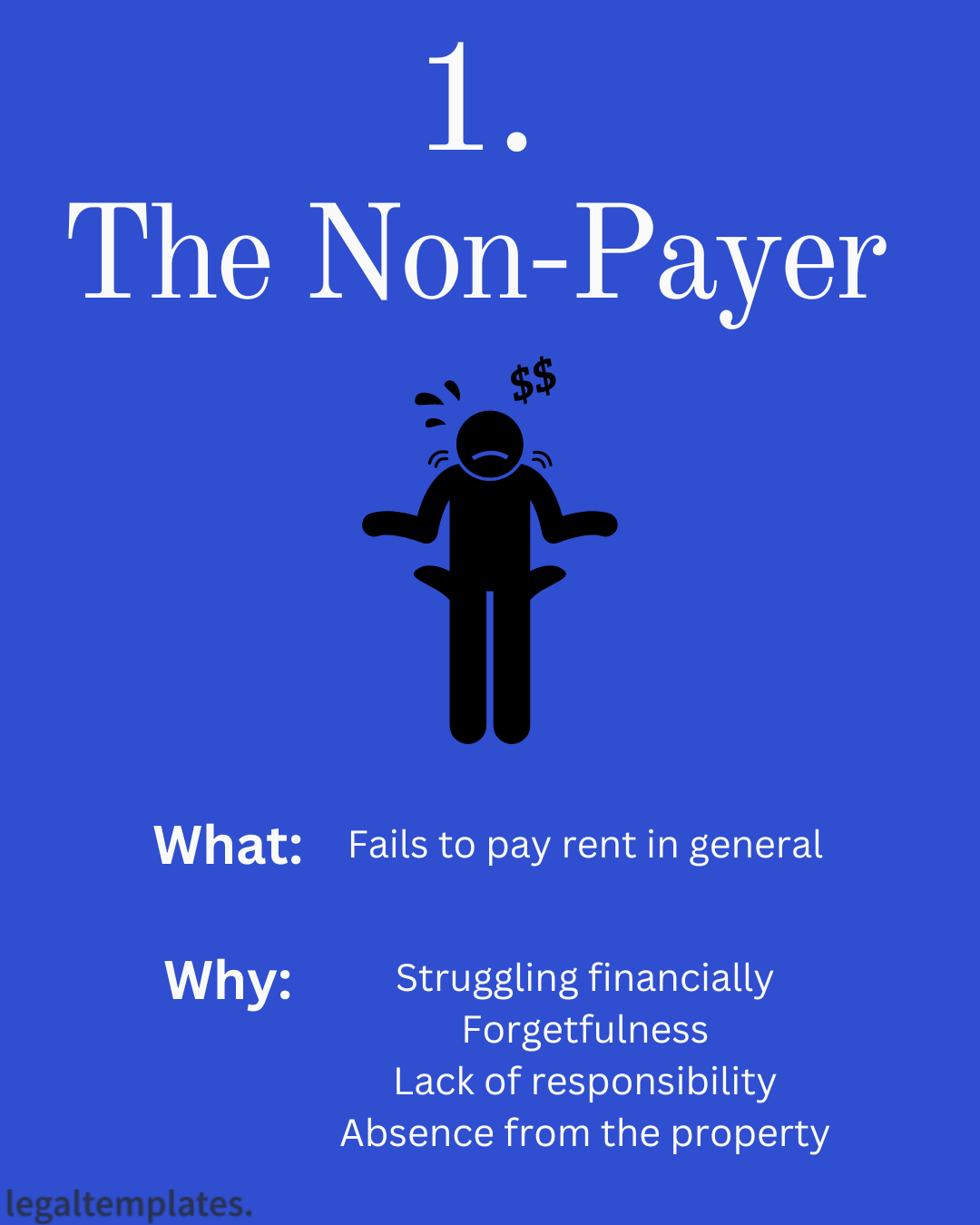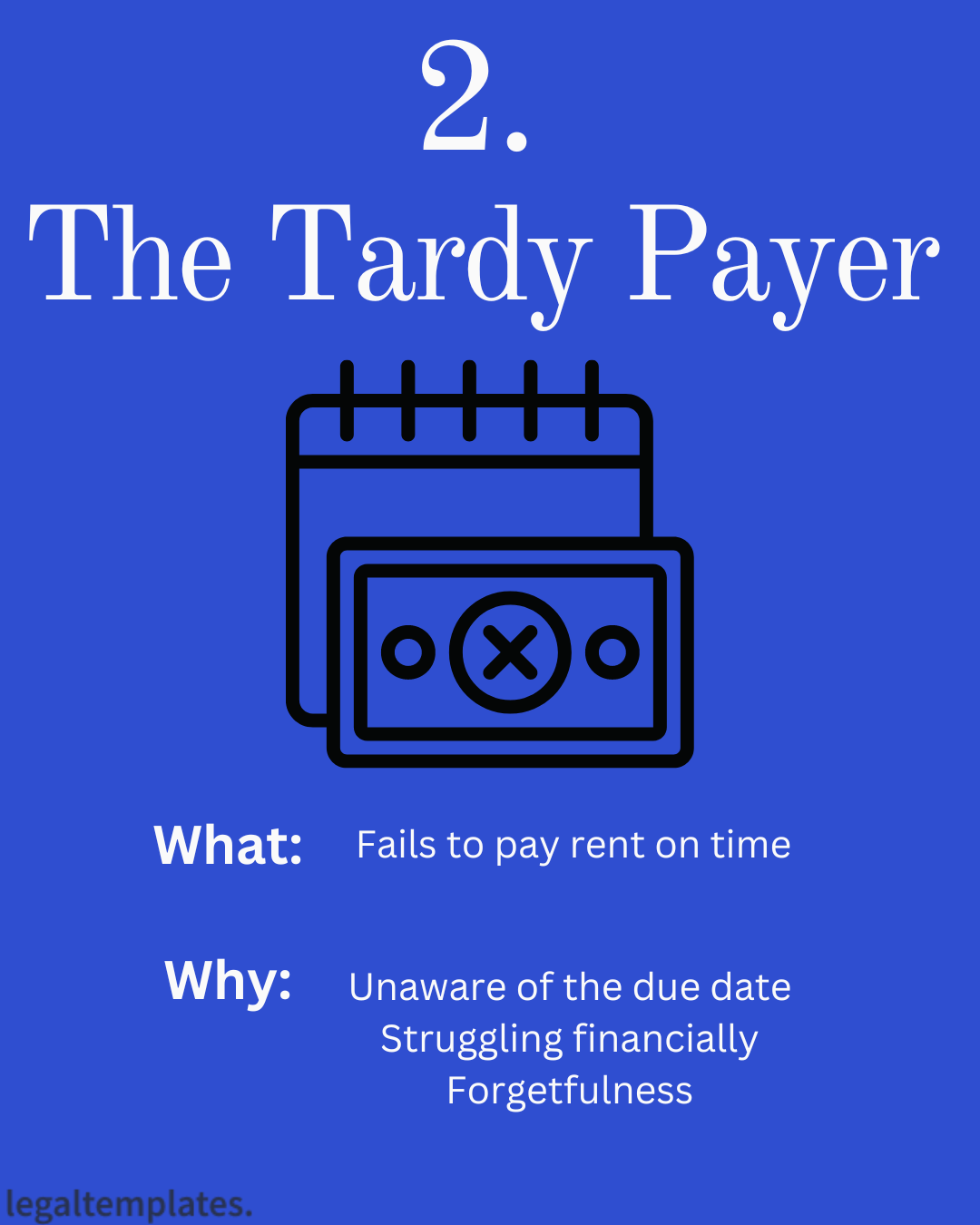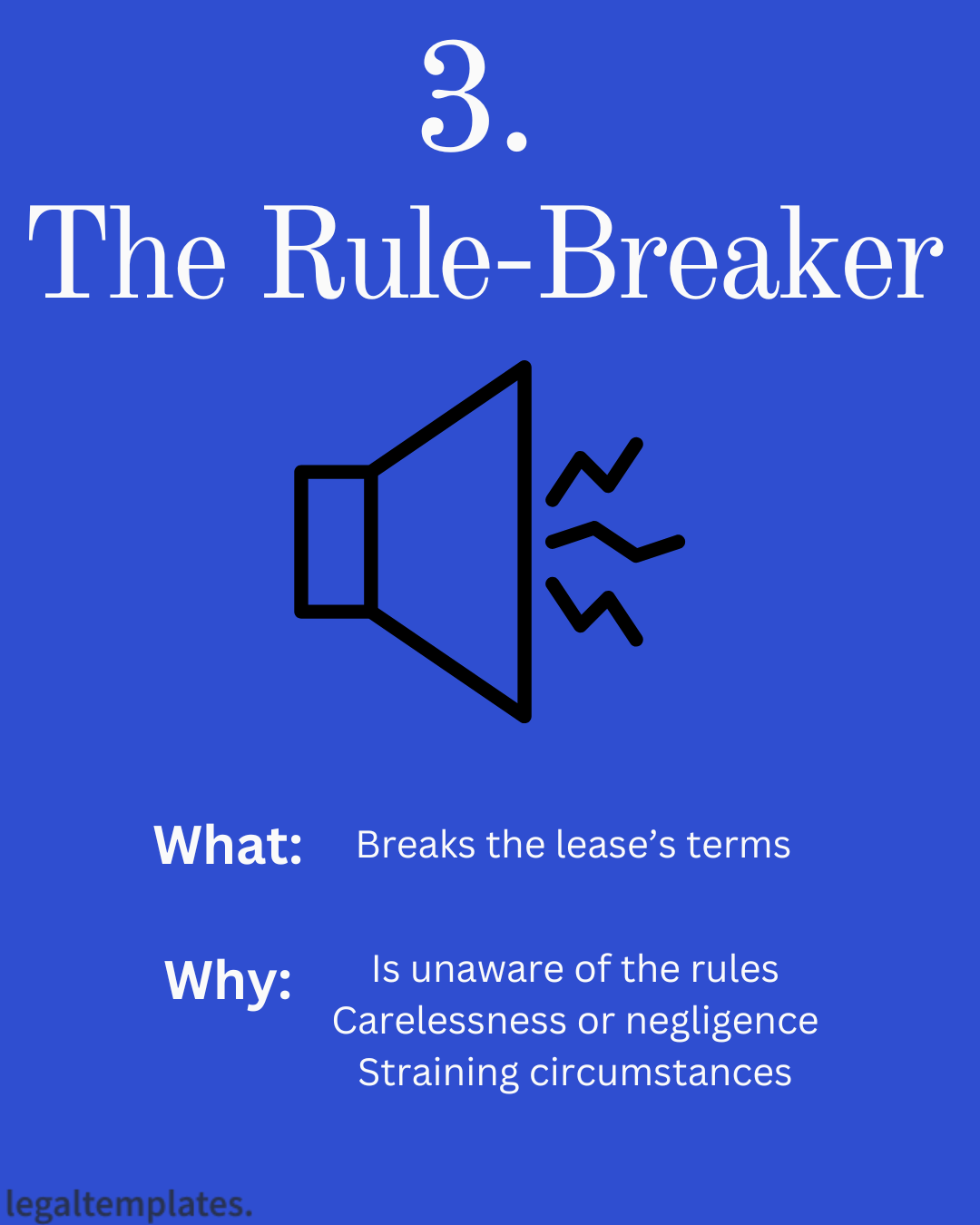
With holes blown into the wall, damaged appliances, losses of hundreds of dollars, unanswered phone calls, and nasty odors that fill up the entire house, one can only wonder, what kind of nightmare is this? Well, it might be the case of having a problematic tenant.
You probably hope to go your own way once you and your tenant sign the lease and hand over the keys. Unfortunately, tenants may cause issues that require your attention.
Property owners, beware! Here are the most common types of bad tenants to avoid.
Bad Tenant #1: The Non-Payer

Here you have your classic lousy tenant: The one who ceases to abide by the lease agreement and fails to perform their monthly duty of writing out that rent check. Unfortunately, these missed payments can add up as sunk costs and affect your rental income.
The non-payer may not have paid for various reasons. For instance, they may be:
- Forgetful or simply irresponsible
- Prepared to abandon the property
- Temporarily absent on an extended vacation
- Experiencing financial hardship due to a lost job, medical emergency, or poor money management
Regardless of the reason, the tenant is liable for these payments if they agree to your lease agreement’s conditions.
How to Handle
Start by contacting the tenant in any way possible, whether via text, email, or phone call. Arrange a time to discuss their situation and determine why they’re not paying rent. You may also knock on their door, but don’t enter without permission.
Open a conversation to learn why they aren’t paying rent. Determine if they’re financially capable of paying rent and consider payment plans. Discuss the legal consequences if they continue to default on rental payments. Let it be clear that one of these consequences could be evasion and the forfeit of their security deposit. If you don’t receive a response, you can issue a notice to quit for non-payment.
You might want to suggest different ways to pay rent to help them meet their obligations more easily.
Read more about what you can do if a tenant’s rent is late.
What If You Suspect Abandonment
If you suspect that the tenant has abandoned the property, review the definition of abandonment in your jurisdiction. Some states require a certain period of non-payment before you can consider the property abandoned. Don’t enter the property until you’re certain you can claim it as abandoned from a legal standpoint.
Bad Tenant #2: The Tardy Payer

Next, you have a slightly better version of the non-paying tenant. The tardy payer doesn’t pay their rent on time due to forgetfulness or a less-than-ideal financial situation. They may also be unaware of the due date.
They may not answer your demands for payment immediately, and it may take them several days or weeks to deliver their late rent payments. The lack of punctuality makes it difficult for you to balance budgets and positions the tenant as untrustworthy.
How to Handle
Refer to your lease agreement to ensure that it states the monthly deadline and the applicable grace period the tenant has to pay rent. Issue a rent reminder to the tenant as an informal gesture, prompting them to abide by the lease’s guidelines. Highlight relevant late fees to ensure the tenant pays the overdue rent and late fees.
If the tenant continues to be late, you can initiate a conversation to show your understanding and willingness to solve the issue. Ask the following questions:
- What is the cause of the delayed payment?
- Do you understand that, as outlined in the lease agreement, your rental payments are due on a specific date each month?
- Are you financially capable of making rent payments on time?
After clarifying these points with your tenant, review the lease agreement with them. Whether it was a one-time occurrence or a persistent ongoing issue, use your discretion to give your tenant another chance to pay on time or be merciful with your late rent fees. If the tenant continues to make late payments after the discussion, you can issue a notice to pay rent or quit.
Bad Tenant #3: The Rule-Breaker

Tenants must follow the guidelines in the lease agreement, including those that relate to quiet hours, pet policies, occupancy limits, smoking restrictions, and the use of common areas. You’d think that tenants would be more cautious about breaking these rules once both parties have signed legally binding documents. However, some tenants may still feel they can discreetly bend the rules.
For example, a landlord may enforce a strict no-pets policy. Despite this, a tenant might believe they can secretly bring a dog into the rental unit. However, complaints from neighbors about barking or the landlord’s routine inspections are likely to reveal the violation.
Another common scenario is when a tenant sublets the unit despite a clear prohibition in the lease. This not only breaches the lease agreement but can also lead to legal consequences for both the landlord and the tenant.
Similarly, smoking restrictions have become more critical in recent years, particularly with the growing popularity of vaping. Although vaping might appear to be a safer alternative to traditional smoking, it is often regulated under similar laws in many states. Landlords should stay informed about vaping laws in their state to ensure compliance, set clear expectations for tenants, and avoid potential liabilities.
How to Handle
As a landlord, it’s usually difficult to ascertain if the tenant breaks the rules within the property unless you occasionally visit it. However, if you discover they’re breaking the rules, you must address the situation accordingly.
Discuss the following points with your tenant:
- Is there an alternative solution for what they’re doing?
- Is it necessary to create another addendum to the lease, such as a pet addendum or a smoking addendum?
- Does the tenant understand all the rules and responsibilities in the lease?
- Does the tenant need to complete a roommate agreement to specify the other tenants’ responsibilities?
If the tenant doesn’t rectify their behavior to be in compliance with the established rules, you can issue a notice to quit for non-compliance.
Bad Tenant #4: The Destroyer

As far as terrible tenants go, the destroyer is as bad as they get. This tenant damages and destroys property, whether intentionally or unintentionally. Regardless of their intent, a destroyer can cost you hundreds of dollars to fix and repair the property damages. You may also lose out on rental income, as it takes time to complete the necessary repairs to make a unit desirable or even habitable.
A destroyer tenant may exhibit immature, careless, or irresponsible behavior, resulting in accidents and unintended property damage. A tenant experiencing mental instability or the need for retaliation may cause intentional damage.
How to Handle
First, calculate the property damage and ascertain if the tenant is liable for all costs. Set up a meeting with your tenant and discuss the following points:
- Is the tenant able to pay for and repair the damages?
- Explore the possible ways to prevent such occurrences from happening. What was the reason for the damage? Do they always leave the stove on? Why are they breaking the window glasses? Why is this occurring, and how can you prevent it from happening again?
While you can’t evict a tenant without a legally valid reason, the lease agreement serves as a key legally binding document outlining the tenancy rules for both the landlord and the tenant. If the tenant engages in vandalism or another illegal activity, you can issue a notice to quit for illegal activity.
How to Protect Yourself from Bad Tenants
Here are some steps to protect yourself from problematic tenants:
- Perform a thorough tenant screening process on the prospective tenant. Screen tenants to isolate bad ones from your potential pool. Have prospective tenants fill out a rental application. Use this document to obtain permission to check their credit and contact previous landlords to learn about their eviction history.
- Write concise lease agreements. Ensure all leases contain enforceable written guidelines and outline the parties’ expectations.
- Hire property managers. A property manager or property management company can help you oversee multiple rental properties and manage day-to-day interactions with tenants. They can pinpoint bad tenant behavior and help you de-escalate it more efficiently.
- Have an exit strategy. If dealing with a problematic tenant, there is much in your control as the landlord to evict them if they have violated the lease. You may also use a lease termination letter to end a periodic lease.
Navigating Difficult Tenants
Set yourself up for success by evaluating potential tenants before signing a lease. Even if you perform thorough screening, you may have a bad tenant or two on your rental property. Always facilitate open communication to address the problem. Deal with each situation efficiently and resort to eviction procedures if necessary. If you need help figuring out where to start, consult a landlord-tenant lawyer.
